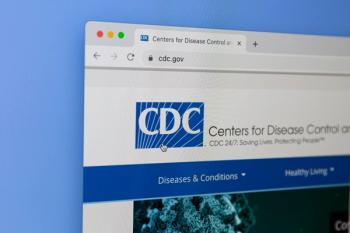
Artificial Intelligence May be the Future of Cancer Detection
An artificial intelligence platform detected 92.4% of breast cancer tumors.
Breast cancer diagnosis can be difficult due to false positives from diagnostic tests, such as
When a patient is diagnosed with breast cancer, determining the stage is crucial because treatment is contingent on the correct identification. Disease severity is currently determined through the microscopic examination of lymph nodes for evidence that the cancer has metastasized, according to a study conducted by researchers at Google, Inc.
However, this process is also prone to errors. The study authors believe that computer-assisted technology can be used to detect lymph node metastases and could increase the sensitivity, speed, and consistency of results.
Recently, deep convolutional neural network (CNN) increased the accuracy of image recognition, object detection, semantic segmentation, and healthcare, according to the study.
The authors developed a novel artificial intelligence approach that could be used to detect breast cancer metastasis in lymph nodes. Through analysis, the authors discovered that the new model reduced the error rate by 50%, which was a significant finding, the study noted.
The goal of the approach is to classify if a gigapixel pathology image contains a tumor, and if it does, to pinpoint it for review by a pathologist, according to the study. This approach cuts down on errors significantly and may even reduce costs.
The authors tested the model by showing it images of healthy and cancerous tissues. The accuracy was determined through Camelyon16 evaluation metrics: Area Under ROC, which evaluates slide-level classification, and FROC, which evaluates the accuracy of tumor detection and localization, according to the study.
The study authors discovered that the new technique significantly reduced the number of false-positives received from the test compared with traditional detection.
“Our method yields state-of-the-art sensitivity on the challenging task of detecting small tumors in gigapixel pathology slides, reducing the false negative rate to a quarter of a pathologist and less than half of the previous best result,” the authors wrote.
Specifically, the authors reported that the deep CNN technology discovered 8 false positives per image, and was able to detect 92.4% of the tumors, according to the study. In comparison, the most accurate automated approach only detected 82.7% of cancers, while human pathologists only achieved 73.2% sensitivity.
These findings show the promise of using artificial intelligence for cancer detection, which could significantly reduce costs and burden on patients who receive a false positive test result, according to the study. While additional research is warranted, the preliminary findings are overwhelmingly positive.
“Our method could improve accuracy and consistency of evaluating breast cancer cases, and potentially improve patient outcomes,” the authors concluded. “Future work will focus on improvements utilizing larger datasets.”
Newsletter
Stay informed on drug updates, treatment guidelines, and pharmacy practice trends—subscribe to Pharmacy Times for weekly clinical insights.














































































































































































































